







| Egyptian Goose (Alopochen aegyptiaca (Linnaeus, 1766)) |








|
|
Scientific name: Alopochen aegyptiaca (Linnaeus, 1766) Common name: Egyptian Goose French name: Ouette d'Égypte, Oie d'Égypte Order: Anseriformes Family: Anatidae Size: Body size: 73 cm; Wingspan: 135 to 155 cm; Weight: 1,5 to 2,2 kg Habitat: Lakes or ponds with fresh water, rivers, damp meadows, parks. Food: The Egyptian Goose moves in pair or in small flock to feeding areas. It feeds on grasses, leaves, seeds and cereals. Nesting: The nesting period vary very much in Africa depending of the region. It is restricted to March and April for the European birds. The nest can be on the ground under a bush or high in a cavity or in an old nest of birds of prey. Females lay 6 to 12 eggs and the juveniles will begin to fly at the age of 10 weeks. Migration: Sedentary with some occasional moves. Geographic area: Africa south of the Sahara, Nile valley. It has been introduced to England, the Netherlands and Germany. |
The Egyptian Goose is a member of the Tadornidae subfamily. The plumage is rather variable in colour from brown to beige or grey. The head is a paler colour with a dark brown patch around the eye. The upper side of the body is generally darker than the under side. The under side of the wings is white. There can be one or more brown spots on the chest. The long and strong pink legs are typical of this species. |
| [To know more about the Egyptian Goose] [Next picture] [Top] |
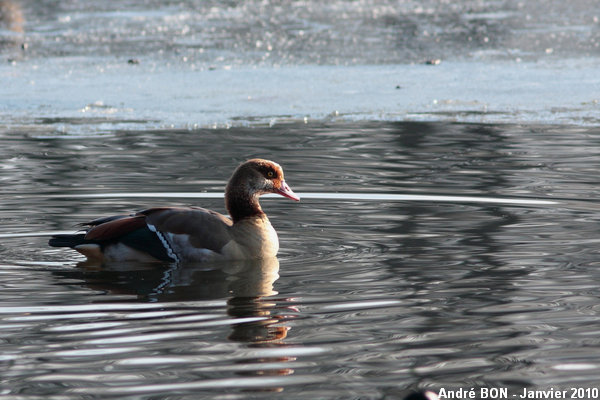
|
The cold spell which happened in northern Europe in January 2010 has pushed a new species to the pond. This must have only been a temporary stop during a move further southwards. I have observed this Egyptian Goose, certainly coming from England or from the Netherlands, only one time. It was already gone the day after. |
| [To know more about the Egyptian Goose] [Next picture] [Previous picture] [Top] |
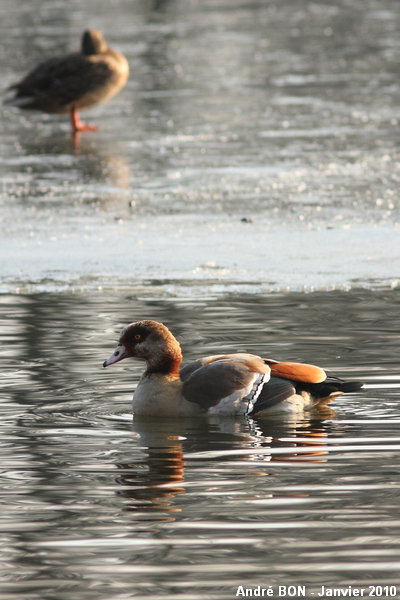
|
This small corner, not yet covered with ice, was used as a refuge for many Common Coots, Common Mallards and Great Crested Grebes. Several of my friends came here a few minutes before me, for bird watching, and they did not notice the Egyptian Goose. Then I could tease them as if I need to wear glasses for close-up view, I am still having a good view at long distance ;-). |
| [To know more about the Egyptian Goose] [Next picture] [Previous picture] [Top] |
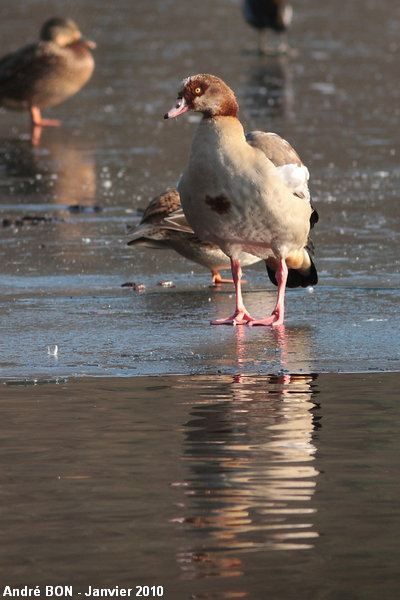
|
At least, the Egyptian Goose has been kind to climb up on the ice so that you can admire its beautiful pink legs and the dark patch on its chest. |
| [To know more about the Egyptian Goose] [Next picture] [Previous picture] [Top] |
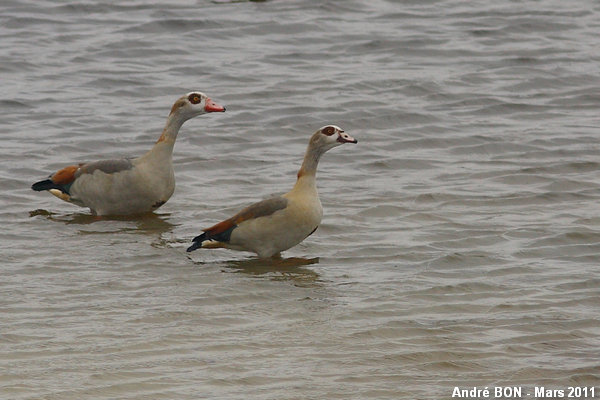
|
Here is the place from where Egyptian Geese come when they fly southwards to France during very cold winter periods. I have shot this picture on a small pond located at a few hundreds of meters from the coast of the Wadden Sea. |
| [To know more about the Egyptian Goose] [Next picture] [Previous picture] [Top] |
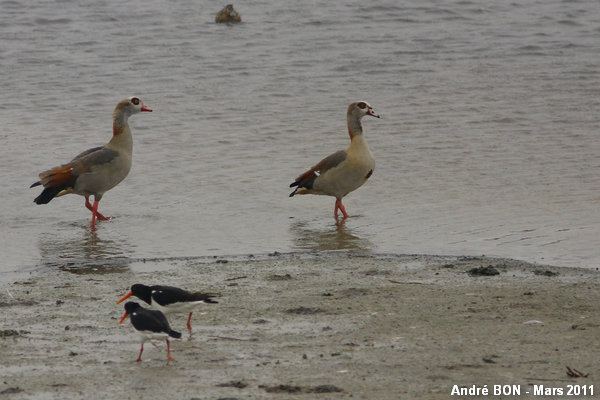
|
I have observed this pair of Egyptian Geese with Eurasian Oystercatchers, Northern Shovelers, Gadwalls, Eurasian Wigeons, Common Shelducks, Greylag Geese and Black-tailed Godwits. |
| [To know more about the Egyptian Goose] [Next picture] [Previous picture] [Top] |

|
I have observed this Egyptian Goose family in the Parc de la Tête d'Or, in the city of Lyon. |
| [To know more about the Egyptian Goose] [Next picture] [Previous picture] [Top] |
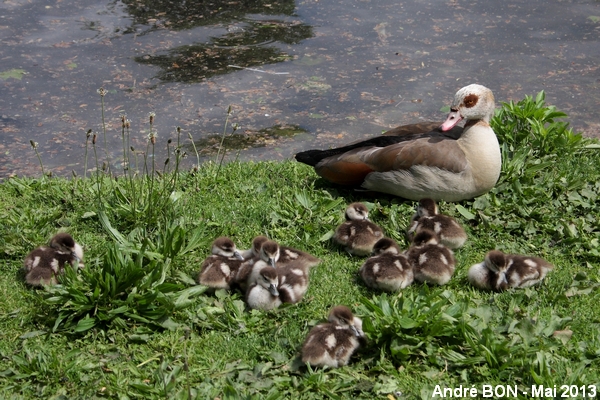
|
I have counted eleven chicks. |
| [To know more about the Egyptian Goose] [Previous picture] [Top] |
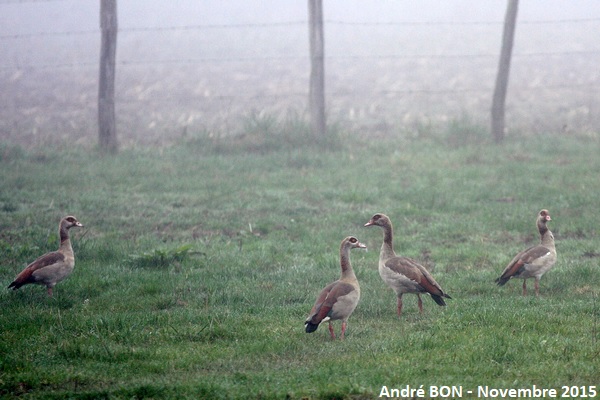
|
Usual weather for the month of November in the Basse Vallée du Doubs, that's to say fog. What a surprise to see a flock of 11 Egyptian Gooses. My book on the Birds of Saône-et-Loire, which is not very old (published in 2012), does not mention any observation at this time of the year. An ornithologist friend, whom I informed of this sighting, pointed out to me that in a few years the Egyptian Goose had become regular nesters in the region. |